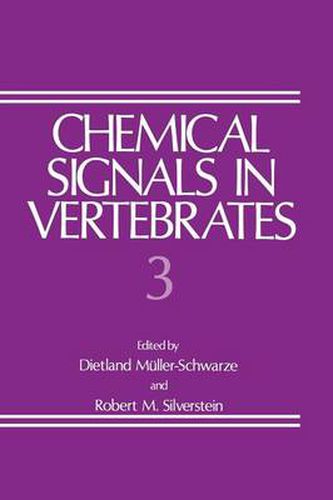Readings Newsletter
Become a Readings Member to make your shopping experience even easier.
Sign in or sign up for free!
You’re not far away from qualifying for FREE standard shipping within Australia
You’ve qualified for FREE standard shipping within Australia
The cart is loading…






This title is printed to order. This book may have been self-published. If so, we cannot guarantee the quality of the content. In the main most books will have gone through the editing process however some may not. We therefore suggest that you be aware of this before ordering this book. If in doubt check either the author or publisher’s details as we are unable to accept any returns unless they are faulty. Please contact us if you have any questions.
The first volume in this series appeared in 1977, the second in 1980. From these volumes and the present one, some research trends in chemical communication can be perceived. In the 1977 volume, studies on 13 animal taxa were reported. In the present volume, the number is 25. This taxonomie diversi fication of research since the first volume of this series demon strates the wide variety of ecological adaptions, although no new general principles of chemical communication have ernerged. Further more, divergences in chemical comrnunication below the species level have become more apparent. In general, more sophisticated observa tions and techniques have led to greater awareness of the com plexities in chemical communication. As such awareness has also developed in the field of insect chemical communication, there has been a corresponding increase in the identification of the chemical compounds involved. However, in the vertebrates, no such correlation exists; in the present volume, conclusive chemical identifications of semiochemicals are remarkable by their paucity.
$9.00 standard shipping within Australia
FREE standard shipping within Australia for orders over $100.00
Express & International shipping calculated at checkout
This title is printed to order. This book may have been self-published. If so, we cannot guarantee the quality of the content. In the main most books will have gone through the editing process however some may not. We therefore suggest that you be aware of this before ordering this book. If in doubt check either the author or publisher’s details as we are unable to accept any returns unless they are faulty. Please contact us if you have any questions.
The first volume in this series appeared in 1977, the second in 1980. From these volumes and the present one, some research trends in chemical communication can be perceived. In the 1977 volume, studies on 13 animal taxa were reported. In the present volume, the number is 25. This taxonomie diversi fication of research since the first volume of this series demon strates the wide variety of ecological adaptions, although no new general principles of chemical communication have ernerged. Further more, divergences in chemical comrnunication below the species level have become more apparent. In general, more sophisticated observa tions and techniques have led to greater awareness of the com plexities in chemical communication. As such awareness has also developed in the field of insect chemical communication, there has been a corresponding increase in the identification of the chemical compounds involved. However, in the vertebrates, no such correlation exists; in the present volume, conclusive chemical identifications of semiochemicals are remarkable by their paucity.